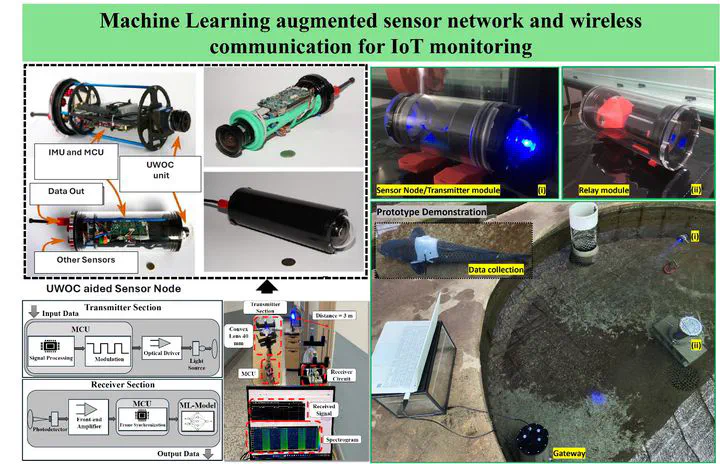Machine learning-Assisted Object Monitoring supported by UWOC for IoUT
Dec 5, 2024· ,,,·
0 min read
,,,·
0 min read
Maaz Salman
Javad Bolboli
Kaleem Ullah
Wan-Young Chung
 Image credit:
Image credit:Abstract
The study addresses underwater sensor network challenges by developing a compact wireless system using diversity gain-enabled relays. Employing combining techniques—Equal Gain Combining (EGC), Majority Logic Combining (MLC), and Selection Combining (SC)—the system achieves data transmission with packet error rates between 26-30% at 0.5 Mbps. The sensor node, equipped with an underwater optical wireless communication module, collects IMU data from multiple fish. Machine learning models (LSTM, Spatial Attention, RNN, Transformer, and GRU) were trained to predict fish acceleration states, achieving training accuracies ranging from 68.16% to 93.86%. The Spatial Attention model demonstrated the highest performance, successfully categorizing fish movements into steady, low, medium, and high acceleration states.
Type
Publication
IEEE INTERNET OF THINGS JOURNAL, 1(1)